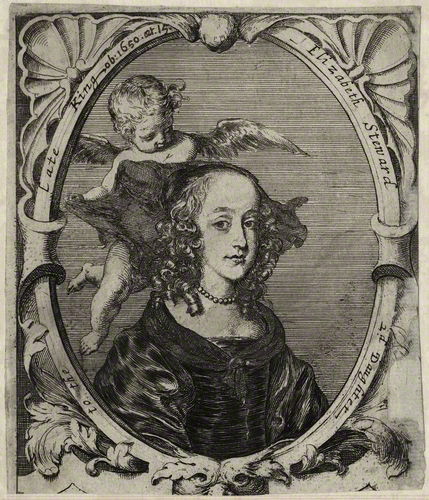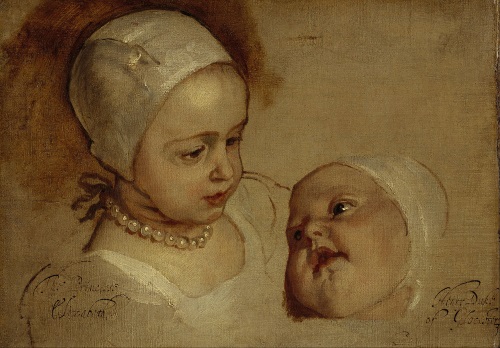About Moniek
My name is Moniek and I am from the Netherlands. I began this website in 2013 because I wanted to share these women's amazing stories.
When searching for Elizabeth of England, one automatically finds pages on Queen Elizabeth I. She is a fascinating subject of course, but I was looking for a forgotten princess. Princess Elizabeth Stuart, daughter of Charles I.
She lived during a time of unrest. Her father was eventually executed in 1649. From the age of six, she was a prisoner of Parliament during the English civil war. She wrote an emotional account of her last meeting with her father before his execution.
In 1642 Elizabeth and her brother, the Duke of Gloucester were placed under the care of Parliament. Guardianship was assigned to many different nobles. In 1643 Elizabeth moved to Chelsea with her brother after she broke her leg. The Duke of York (the future James II), the Duke of Gloucester and Elizabeth were allowed to travel to Maidenhead to meet with their father and spent two days with him in 1647. Supposedly Elizabeth helped the Duke of York escape. In 1648 Elizabeth was to be moved again. She wrote a letter to appeal this decision.
"My Lords, I account myself very miserable that I must have my servants taken from me and strangers put to me. You promised me that you would have a care for me; and I hope you will show it in preventing so great a grief as this would be to me. I pray my lords consider of it, and give me cause to thank you, and to rest. Your loving friend, Elizabeth."
The letter worked and the decision was overturned.
After her father was sentenced to death in 1649, Elizabeth wrote a letter to Parliament requesting to join her sister Mary in the Netherlands. This request was refused until the execution had taken place. On 29 January 1649, Elizabeth and the Duke of Gloucester met with their father for the last time. She wrote this after the meeting:
He bid us tell my mother that his thoughts had never strayed from her, and that his love would be the same to the last. Withal, he commanded me and my brother to be obedient to her; and bid me send his blessing to the rest of my brothers and sisters, with communications to all his friends. Then, taking my brother Gloucester on his knee, he said, 'Sweetheart, now they will cut off thy father's head.' And Gloucester looking very intently upon him, he said again, "Heed, my child, what I say: they will cut off my head and perhaps make thee a king. But mark what I say. Thou must not be a king as long as thy brothers Charles and James do live; for they will cut off your brothers' heads when they can catch them, and cut off thy head too at the last, and therefore I charge you, do not be made a king by them.' At which my brother sighed deeply, and made answer: 'I will be torn in pieces first!' And these words, coming so unexpectedly from so young a child, rejoiced my father exceedingly. And his majesty spoke to him of the welfare of his soul, and to keep his religion, commanding him to fear God, and He would provide for him. Further, he commanded us all to forgive those people, but never to trust them; for they had been most false to him and those that gave them power, and he feared also to their own souls. And he desired me not to grieve for him, for he should die a martyr, and that he doubted not the Lord would settle his throne upon his son, and that we all should be happier than we could have expected to have been if he had lived; with many other things which at present I cannot remember."
Parliament still refused to let the two go to the Netherlands. They were moved to Penhurst Place, under the guardianship of the 2nd Earl of Leicester. In 1650, when Elizabeth oldest brother Charles (II) went to Scotland to be crowned King, Elizabeth was moved to the Isle of Wight as a hostage. It was this move that probably caused her death. Elizabeth had complained that she was not well. Elizabeth caught a cold that developed into pneumonia. She died on 8 September 1650. Three days later, permission was granted for her to go to The Netherlands. She is buried on the Isle of Wight, but there was no memorial for her until Queen Victoria placed one there. The plaque reads:
"To the memory of The Princess Elizabeth, daughter of King Charles I, who died at Carisbrooke Castle on 8 September 1650, and is interred beneath the chancel of this church, this monument is erected as a token of respect for her virtues and of sympathy for her misfortunes, by Victoria R., 1856."
I find it very sad that this little girl never got to live to her full potential. She was a prisoner for most of her life and probably didn't remember a life of freedom. Losing her father in such a way must have been very traumatic.




